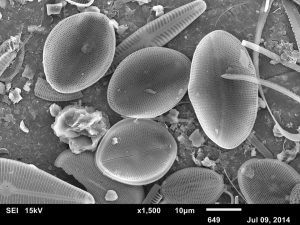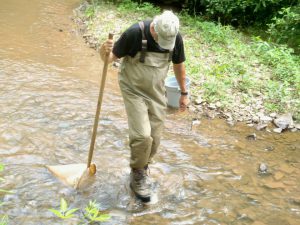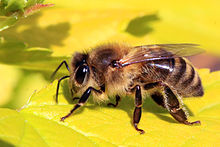August is water quality month, and August 22 is National Honey Bee Day. There are just so many things to celebrate and explore!
 Diatoms are a great thing to explore. They’re microscopic algae. Some diatoms are suspended in the water, while others attach to the rocks and debris on the bottom of the stream. The types of diatoms found in a water body are based on the temperature and pH of the water as well as how fast the water is flowing, how much shade is along the body of water, and a lot of other water quality factors. Some scientists feel diatoms are one of the best ways to understand the water quality of a stream since the diatoms are “glued” in place.
Diatoms are a great thing to explore. They’re microscopic algae. Some diatoms are suspended in the water, while others attach to the rocks and debris on the bottom of the stream. The types of diatoms found in a water body are based on the temperature and pH of the water as well as how fast the water is flowing, how much shade is along the body of water, and a lot of other water quality factors. Some scientists feel diatoms are one of the best ways to understand the water quality of a stream since the diatoms are “glued” in place.
Dr. Jack Holt is a biologist at Susquehanna University. He’s been studying diatoms in the Susquehanna River and its tributaries for many years now. Thank you Dr. Holt for sharing this great photo of some of the diatoms you found this summer.
NPC has been giving you a lot of information about different ways to look at water quality. Up to this point, we’ve emphasized that you can’t tell the quality of water, just by looking at it. Well, as with most rules there’s an exception.
Macroinvertebrates are the insects, crustaceans, molluscs, arachnids and annelids you find in flowing water. These animals don’t have a backbone (invertebrates) and are big enough (macro) you can see them with just your eyes.
 The species of macroinvertebrates you find gives you information on the water quality. Some species need more oxygen, while others are more tolerant of different types of pollution.
The species of macroinvertebrates you find gives you information on the water quality. Some species need more oxygen, while others are more tolerant of different types of pollution.
One method to collected macroinvertebrates is to shuffle your feet and kick around in a stream for a specific period of time over a specific distance and collect all the materials that is “released” by the kicking. Most protocols, or procedures, specify the size and type of net to use. Often, it’s a D-Frame Kick Net
 I won’t even try to make a connection between honey bees and water quality. We’ll just celebrate national honey bee day. Honey bees were brought to North America by European colonists. The honey bees provided wax for candles, honey for food, and pollination (although the colonists probably didn’t realize this). Over the last several years honey bee populations have dramatically decreased. Scientists and agricultural experts are encouraging homeowners and landowners to plant pollinator friendly flowers to help honey bee populations have many food sources.
I won’t even try to make a connection between honey bees and water quality. We’ll just celebrate national honey bee day. Honey bees were brought to North America by European colonists. The honey bees provided wax for candles, honey for food, and pollination (although the colonists probably didn’t realize this). Over the last several years honey bee populations have dramatically decreased. Scientists and agricultural experts are encouraging homeowners and landowners to plant pollinator friendly flowers to help honey bee populations have many food sources.
Here’s a great website by National Geographic on honey bees!

